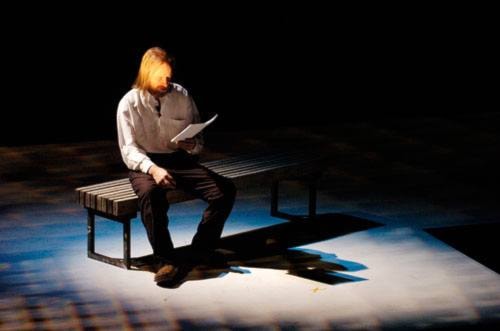Imagine an engineer, an artist, and an environmentalist working together to clean up an old mining site.
It sounds like the beginning of a bad joke.
But for Vancouver-based visual artist, Haruko Okano, it’s a dream partnership.
Two years after completing an artist residency in Dawson City, Okano has returned to the North in search of unlikely collaborators in the resource and environmental industry.
Okano, who uses the natural world as a pallet for her art, sees opportunities for artists to help solve environmental problems.
“The (resource) industry can stretch and break the idea of working with artists, and artists can stretch their idea of art,” said Okano.
She points to the Elevated Wetlands project in Toronto, an art installation that also functions as a water filtration system for the polluted Don River.
Tainted water is pumped through large, sculptured plant beds where it is cleaned then released back into the Don River. It’s esthetically pleasing to the eye and runs entirely on solar energy.
The project was spearheaded by artist Noel Hardings and resulted in a partnership between him, the auto industry and a higher education institution.
“If those kinds of disparate industries can work together there, then why not here?” said Okano.
This type of art is effective because it sends an important message about the environment without being overly confrontational, she said.
“It’s not about me pushing it into your face, saying, ‘Are you doing your recycling?’ It goes beyond written and spoken language.”
Okano thinks there is potential for art to flourish in environmentally ravaged parts of the Yukon, such as the mine tailings ponds outside of Dawson City.
She explains how oyster mushrooms, for instance, could be used to extract polyvinyl chlorides from the ground. This fungus converts and neutralizes chemicals on contaminated building sites.
“The amazing thing is that the mushrooms remain edible,” she said.
But she knows that an idea like this, which has been put to the test in New York City and on Vancouver Island, requires developers to have an open mind.
“Engineers aren’t rushing to work with artists now; there’s still lots of understanding needed,” she said.
Wednesday evening, Okano and Whitehorse artist Joyce Majiski will be hosting a roundtable on environmental art. They’ve sent out invitations to conservationists as well as people in the resource industry, hoping to spark a discussion about how art can influence nature and vice versa.
Okano has been making art since the early ‘70s but in the last 10 years focused much of her creativity on the natural environment.
She incorporates organic, recycled and biodegradable material into her work to create thought-provoking art.
In 2003 she was part of the Three Rivers project organized by CPAWS-Yukon in which a group of artists was invited to create a visual response to endangered land and animals in the Peel region. Okano built a boat made of moose skin that floated above a bed of sand.
“The idea behind the sand was that the more people that walked over the sand the more they obliterated it. It showed the potential for the same thing to happen to the Earth,” she said.
Okano will host another evening talk at Arts Underground on Friday, showcasing past samples of
her environmental art as well as describing the process she uses when working with natural material.
On the weekend she facilitates a workshop in Golden Horn for artists to collaborate with one another on an environmental art project specific to the Yukon.
The work will eventually be showcased at the Yukon Arts Centre in November.
Okano’s visit to the North is part of the LLAMA Project (Look Listen and Make Art), a collaborative venture that links artists from around the world. The current project, Voz/Voice, involves an artist exchange between Mexico and Canada. This past winter Okano and Majiski spent time in Mexico touring small towns, meeting other artists, giving workshops and making art.
When Okano left the town of St. Augustine, Mexico, she used large, hardened seed pods to tell a narrative of the surrounding people and land she had immersed herself in.
“Wherever I go I like to leave behind a piece of work as a response to my environment.”
She’s already planning to leave behind an art piece made from harvested wood at the Ted Harrison retreat she’s staying at before she leaves the Yukon at the end of August.
Haruko Okano’s roundtable discussion, Convergence, happens Wednesday, 7 p.m. at the Old Fire Hall.
Artists wishing to sign up for the weekend workshop can contact Arts Underground.
More information about the LLAMA project can be found at www.llamaproject.com
Contact Vivian Belik at vivianb@yukon-news.com
